
1. Requirement and Project Scope
1.1 Requirements: This Network Design Assignment considers the organization requirements and prepares a network design to suit these requirements. In addition to designing this report also focuses on developing a network configuration which involves configuration of routers and switches. This is followed by access point detailing and configuration of the server finalization. Post which an estimated budget is prepared for implementation of this network design.
1.2 Scope: In the next step the project prepares the complete network configuration based on network design prepared. As per this design IPv6 configuration will be provided to the branches A and B while IPv4 configuration will be provided to branch C. IPv6 configuration will also be applicable for headquarter branch. There is no flexibility to project budget, and it needs to be completed within this approval limit. Also, there can be no extension to the project timelines as this will result in expenses to resources. Hence increasing the budget.
2. Network Design and Justification
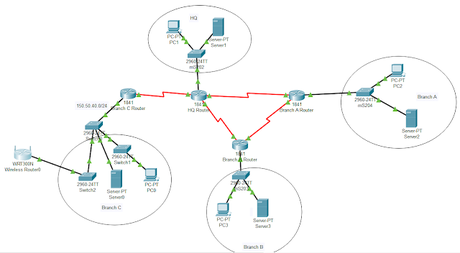
2.2 IP Addressing Scheme (IPv6) for branches and headquarters
2.3 Network address for devices i.e. computers and servers
2.4 Choice Justification: For good effectiveness and efficiency of the network design, the routing protocol selected is Open Shortest Path First (OSPF) because it has various benefits to a network design. Starting with being a loop free protocol the time required for transferring changes to the entire autonomous system in the router is very minimum which improves the performance of the network. In addition to this benefit network overhead is also reduced by this protocol which means less interference for the network and hence effectiveness is better. The network security is also improved by this protocol as MD5 authentication is carried along with implementation of interface based plain text. This capability of the OSPF routing protocol ensures that it can handle a large scale of networks up to thousand units.
Due to a dual stack mechanism being applied in this network design which consists of IPv4 and IPv6 for different branches, the efficiency is improved. Both the branches A and B can easily communicate among themselves while branch C follows a different protocol IPv4. The dual mechanism context of IPv4 and IPv6 protocol has already been discussed earlier in the report.
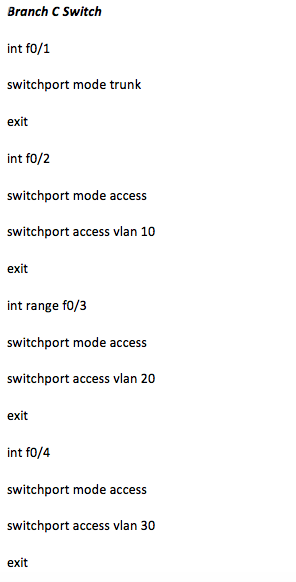
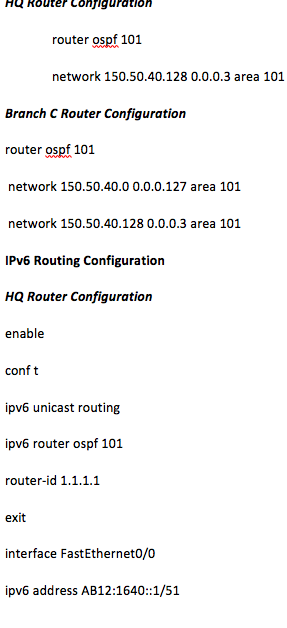
3.3 HQ Router Configuration
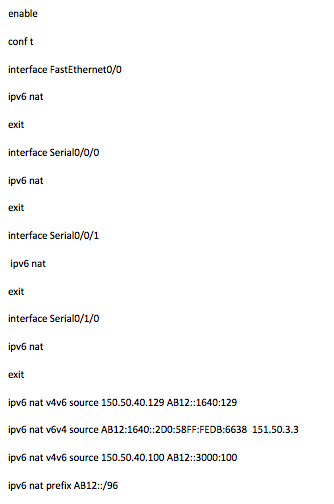
3.4 Host Configuration
Branch C PC Configuration
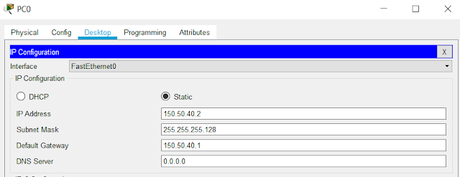
3.5 Guidelines for server configuration and access point.
Below steps are required to configure the access point:
- Deployment of switches and the routers to be done.
- For connection of the router to the computer and router to the access point, Ethernet cable is to be used.
- Configuration of access point is done by entering a default IP address in the access point webpage.
Below steps provided in this Network Design Assignment are required for the configuration of the server:
- Configuration of IP address is done.
- Configuration of DNS name server is done.
- Configuration of host name is done
- Validations of domain settings is to be done.
- Configuration of TLS or transport layer security is done and then server configuration is completed by enabling sub domain isolation.
4. Budget Estimations and Timeline
Specification and Hardware Requirement
Cisco WS-C3750X-24P-S Catalyst 3750X 24 Port Poe Switch
AC/DC Support: AC and DC
Dimensions (H x W x D): 1.75 x 17.5 x 18.0 in. (4.45 x 44.5 x 46.0 cm)
Packets per second (Mpps): 65.5
$403.00
Human resources and logistics
Tentative timeline specifications illustrated in Network Design Assignment
Conclusion
Network design details and its implementation procedures have been illustrated in this Network Design Assignment for the given organization. Network configuration and device requirements have also been detailed. Owing to its various benefits, Open Shortest Path First (OSPF) has been selected for the network design. In order to maintain an effective and efficient communication network, the dual stack mechanism of IPv4 and IPv6 has been considered for all the three branches and the headquarters. Cost estimation has also been prepared considering the optimal number of resources required for the project completion. Considering the cost of team members, Consultant and the Project Manager the budget estimates is between $105,000 and $160,000. In addition, the timelines for project completion has also been estimated for this project and this comes out to an approximate of 63 days. The timeline estimate includes completion of all the activities which are part of this project and maintain the quality delivered for each of the activities so that the objective of maintaining a high effectiveness and efficient network design is achieved.
[1] G. Boeing, "Measuring the complexity of urban form and design," Urban Des. Int., 2018.
[2] Advanced Topics in Types and Programming Languages. 2019.
[3] S. S. S. R. Depuru, L. Wang, and V. Devabhaktuni, "Smart meters for power grid: Challenges, issues, advantages and status," Renewable and Sustainable Energy Reviews. 2011.
[4] W. Yuan, T. Khot, D. Held, C. Mertz, and M. Hebert, "PCN: Point completion network," in Proceedings - 2018 International Conference on 3D Vision, 3DV 2018, 2018.
[5] D. D. Rao, J. S. Vorhies, N. Senzer, and J. Nemunaitis, "siRNA vs. shRNA: Similarities and differences," Advanced Drug Delivery Reviews. 2009.
[6] J. H. Hulstijn, M. Hollander, and T. Greidanus, Network Design Assignment "Incidental vocabulary learning by advanced foreign language students: The influence of marginal glosses, dictionary use, and reoccurrence of unknown words," Mod. Lang. J., 1996.
[7] A. R. Singh, P. K. Mishra, R. Jain, and M. K. Khurana, "Design of global supply chain network with operational risks," International Journal of Advanced Manufacturing Technology. 2012.
[8] B. Mosadegh et al., "Pneumatic networks for soft robotics that actuate rapidly," Adv. Funct. Mater., 2014.
